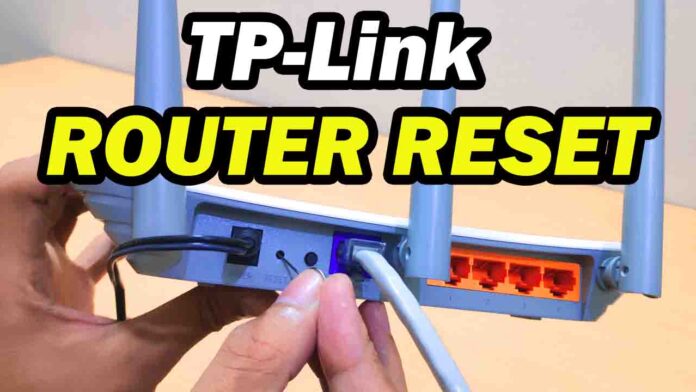TP-Link Router Reset to Factory Defaults Settings
Experiencing connectivity issues with your TP-Link router or looking to restore its factory settings? Resetting your router is a straightforward process that can resolve numerous network problems and refresh your internet connection. This comprehensive guide walks you through the steps to reset your TP-Link router effectively.
Step 1: Understand When to Reset
Why Reset Your TP-Link Router?
- To solve connectivity issues.
- To clear custom settings.
- To secure your network (if you suspect unauthorized access).
- To troubleshoot performance issues.
Step 2: Locate the Reset Button
Finding the Reset Button
- Typically, the reset button is a small, recessed button on the back or bottom of the router.
- You may need a paperclip or a similar object to press it.
Step 3: Choose Your Reset Method
01. Soft Reset:
- Turn on the router.
- Press and hold the reset button for about 3-5 seconds.
- Release the button and wait for the router to restart.
- Ideal for minor issues or if you don’t want to lose your settings.
02. Hard Reset (Factory Reset):
- Power on the router.
- Press and hold the reset button for about 10-15 seconds.
- Release the button when the LED lights start flashing.
- Wait for the router to reboot to its factory settings.
- Use this method for major issues or if you want a fresh start.
Step 4: Reconfigure Your Router
Setting Up After Reset
- Connect to your router’s network (usually a default network name and password).
- Access the router’s web interface (typically through a web address like http://192.168.0.1 or http://tplinkwifi.net).
- Enter the default username and password (often “admin/admin”).
- Set up your new network settings, including Wi-Fi name (SSID) and password.
Step 5: Update Firmware (Optional but Recommended)
Why Update Your TP-Link Router Firmware?
- To enhance router performance.
- To patch security vulnerabilities.
- To add new features.
How to Update TP-Link Router:
- Check your router’s manual or TP-Link’s website for firmware updates.
- Download and install the update through the router’s web interface.
Conclusion
Resetting your TP-Link router can help solve a range of network issues, from connectivity problems to security concerns. Whether you need a soft reset or a full factory reset, the process is simple and effective. Remember to reconfigure your router settings and consider a firmware update for optimal performance.
By following these steps, you can reset your TP-Link router and enjoy a smoother, more secure internet experience. Whether you’re a tech novice or a seasoned pro, this guide is designed to help you navigate the reset process with ease and confidence.

